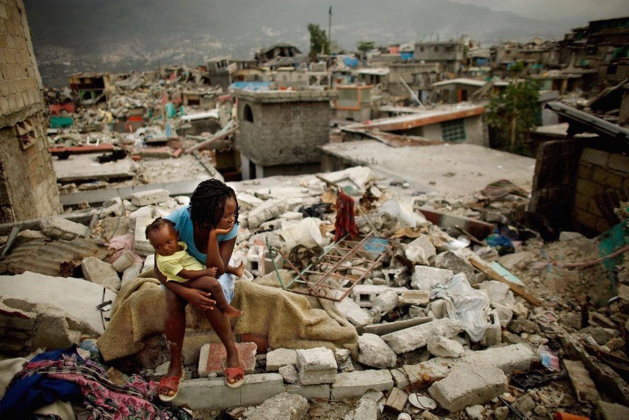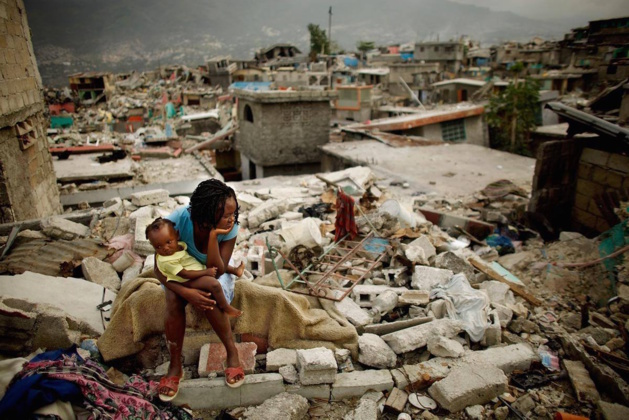
Photo Credit: Chip Somodevilla/Getty Images
Studies, notably those carried out by the CDC, the Center for Disease Control and Prevention, showed that the epidemic would have been brought into the island by Nepalese peacekeepers, intervening in the setting of the United Nations Stabilization Mission in Haiti (MINUSTAH), in operation since 2004, with almost 13,000 peacekeepers present. The hypothesis was not recognized by the UN. As of October 18 2013, according to the World Health Organisation, 8,500 have died, from more than 700,000 cases, mostly recorded in Haiti and the Dominican Republic, as well as in Cuba and Mexico.
According to the CDC, the country has made enormous progress with regards to health since the earthquake, particularly in the four following domains: drinkable water, the prevention and treatment of HIV, vaccination and public hospitals. Sanitation and the use of chlorine in water distribution in the country has distinctly reduced the spread of cholera and other diseases. The President’s Emergency Plan for AIDS Relief was relaunched following the earthquake. Launched by George W. Bush in 2003 and spread to Haiti notably in the form of an antiretroviral treatment for women, its goal was to combat AIDs abroad, and therefore to enable having HIV-negative children. The programme even managed to double the number of women treated, compared the the period before the earthquake. The country also doubled its rate of vaccinations among children and added new vaccines to protect children from Haemophilus influenzae type b, which can cause meningitis, and rotavirus, the main cause of diarrhea among young children. The two can prove fatal for children. The storage capacity was also improved, enabling the conservation of vaccines.
Economic investments
Tuesday February 24th saw the official opening with great fanfare of a Marriott Hotel right at the heart of the capital, in the presence of the former United States President Bill Clinton. The construction of this hotel notably enabled the creation of jobs in the region, as well as boosting the touristic image of Haiti, eclipsed by its Dominican neighbour. The country has also begun the construction of the Port Lafito 25 minutes from Port-au-Prince, which ought to be completed in March. According to the general director of the project, 20,000 jobs will be created in the four coming years. In addition, Friday February 20th, the Minister for Trade and Industry launched the Support Program of Productive Development, a “business accelerator” with the goal of encouraging the creation of small and moderate businesses.
Persistent tensions
However, the political crisis, which seems to characterise the country for years, persists. Several Haitians accuse the president Michel Martelly of being a new dictator imposed on the country by the United States. His incapability to organize elections, which caused the Prime Minister Laurent Lamothe to announce his resignation last December following several protests in the country, provoked the mistrust of the people of Haiti. The elections were to have taken in place in October 2014, the Haitian term in Parliament coming to an end January 12 2015. The end of the term enables the President today to rule the country by decree, which the Haitians suspect is a political manipulation in the hope of establishing a new dictatorship.
On this subject, President Martelly assures that he wants the elections to take place before May of next year. The elections concern the population a lot as the country is experiencing many problems with armed gangs, resulting in several victims. While confrontations have taken place for several weeks in the Cité Soleil commune, the National Network for the Defence of Human Rights estimates that since 2013, these confrontations have resulted in 200 victims, 50 of which have come in the fourth quarter of 2014. Numerous tensions have also grown out of the protests that have taken place in these past few weeks, against racist acts carried out by their Dominican neighbours against the, as well as other protests for the reduction in the cost of petrol, which still is on the rise in Haiti despite decreasing around the world.
A never-ending curse
An accident took place at the Mardi Gras carnival the February 17. Seventeen people were killed, with 60 injured. According to witnesses from the scene of the accident, a float had struck electric power lines before catching fire, killing seven crew members. The other victims lost their lives in the crowd’s surge of general panic. Hundreds of people went to the funerals, at the Champ de Mars in Port-au-Prince February 21, to pay their respects to the victims. Amongst those present was the President Michel Martelly, who took the opportunity to call for unity in mourning, in spite of the differences that set one against the other.




























